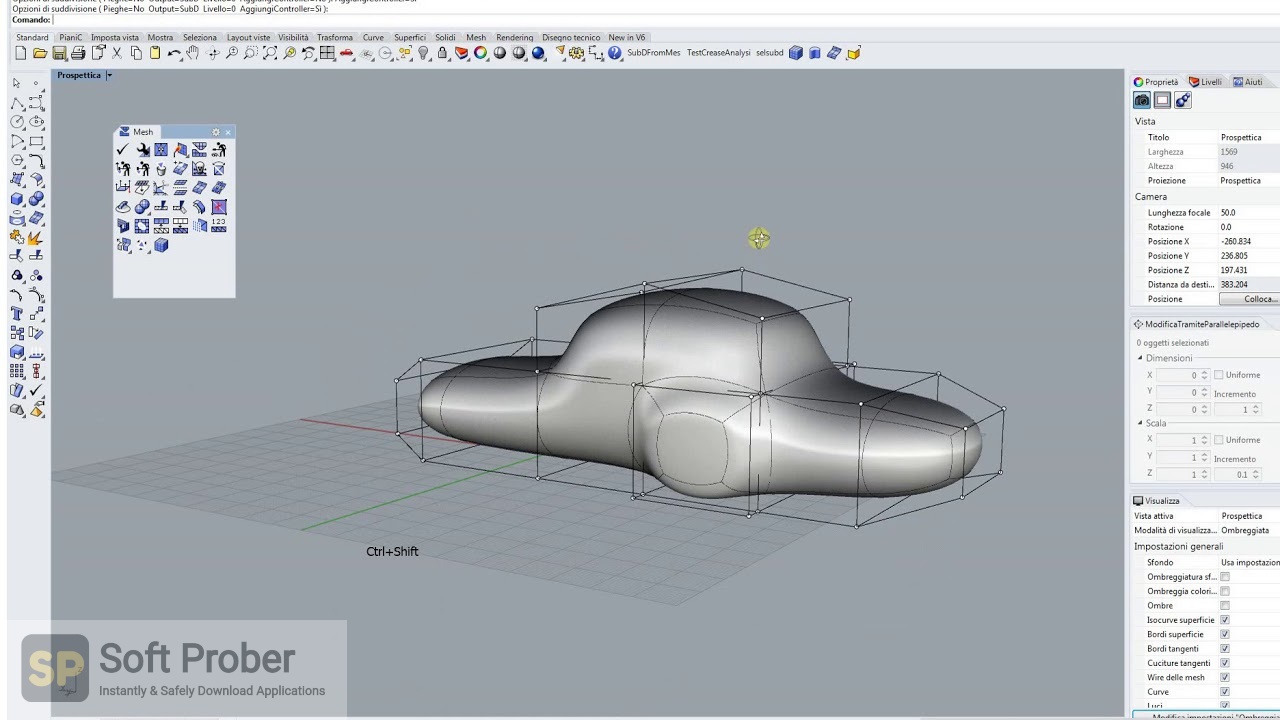
Click the surface outside the trim boundary and it is trimmed.Describes the plugin toolbar and menu options in detail.ĭescribes the most technical settings of the plugin: render settings, Multilight, extra sampling, Denoiser, output settings, channels,… It is organized into four tabs:ĭescribes how you can determine which type of Maxwell environment to use the choices are: Sky (Physical Sky or Constant Dome), Image Based, or None. Once you are ready, type “Trim” or hit the trim button, you will be asked to select first the cutting curve (select it, and then press Enter) and then to select the surface to trim. Note the trim line doesn’t need to be at the same “Z” coordinate of the surface. In this case I am using a square, but the trim line could be a property line for a project site, or it could be the city limits of a town for an urban model, or anything you choose. You will need to trim the edges of your surface down.
How to setup rhinoceros 6 Patch#
Your patch surface will be larger than it needs to be, and surface information outside of your points will be inaccurate as it just extrapolates the general direction of the surface at the edges.

Now my surface is big enough to fill the square. To get a Patch surface that fills the square, I needed to add two points (at the appropriate spot elevation) to the locations indicated.

In my case, I wanted a surface that would fill a square boundary, but the patch bases the surface extent on your points and adds some for good measure. you can experiment with this but a number around 100 should do the trick. A higher number here will make the surface less bendable and in our case here less accurate. Higher numbers will give you more accuracy but if these numbers are too high (on my computer over 80) your computer will crash. For patch you will be given some options. Now select all of these points and use the command “Patch” (you can type this in or use the icon). Your model will look like the one on the right. Then you use the command in Rhino “Extract Points” Which will give you (depending on your contour line accuracy) thousands of points.

You might want to turn other layers off for this. The first thing to do is select all of the contour lines at once, being careful to select no geometry that is not elevation information. Step Tw o – Extract Points.Your contour lines should look something like the images at the left hand side.

Once this is done you can move on to the next step. Many CAD files already have this done, in which case you are in luck! otherwise be prepared to spend some time moving all your lines to the appropriate height. But they do need to be at the correct vertical elevation or “Z” coordinate. The contour lines do not need to be joined as a single line. Don’t worry too much as long as you can find and isolate the contour lines. Step One – Prepare your Contour Lines. You can import most CAD drawing formats directly into Rhino although some information will be lost. This will allow you to quickly and easily develop a 3D model in Rhino. Often you will start a project with existing topographical information in the form of contour lines in a CAD program.


 0 kommentar(er)
0 kommentar(er)
